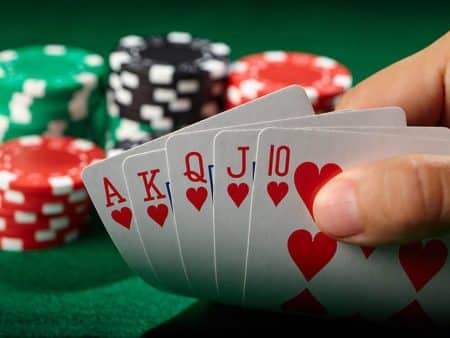Pot Odds and Outs
If you hit the flop has not or you do not expect it to have the best hand (ie bottom pair), then it is important to know how high the chance of a better blade.
With the help of outs can be calculated this probability, while calculated at the pot odds, whether a call is worth at a certain pot and the given odds.
It is important to adjust your poker strategy to that given size.
Pot Odds
In pot odds is understood fundamentally not different from the relationship between the amount of the pot to be won and the application to be brought. Is there a pot size bet, for example, i.e. a player is exactly the amount that is already in the pot against us, have the pot odds a value of 2
Pot Odds = (Pot + enemy Bet): = 2 separate call
For our application, we get (assuming we win;)) returns twice, so the pot odds are 2 to 1
To win in the long term in such situations, our expected earnings (profit chance) at least 33% (2 to 1) amount. How to get to this size, we clarify outs and odds.
Important: The higher the pot odds, the smaller the required odds.
For example, if are in the pot is $ 180 and the opponent bets $ 60 sets, then we need at least 20% (4 to 1) odds to our call to justify mathematically.
Pot Odds = ($ 180 + $ 60): $ 60 = 4
As we get out of our $ 60, the four times (assuming we win), the pot odds are 4 to 1 (4-1).
Outs and Odds
Now it truly is not always easy to calculate our chances of winning in ignorance of the opponent’s blade. Here again, several factors make it easier to flow to us the decision.First, we might already have collected information about his opponents, one could tell what hand he has on the other hand, we know our cards and the cards on the board.From this we can determine how much future cards (Cards Help) one could help to improve his hand. The number of these cards is called Help outs.
If one for example, 9 and 10 ♣ ♣, and the board brings 4 ♥, 7 ♣, 8 ♣, we have 21 outs that our Journal can improve mild to significant.
9 cards (other-♣-Flush or Straight Flush)
+ 6 cards for the straight (four 6s + four boys – 6 ♣ – J ♣)
+ 6 tickets for the High Pair
===========
21 Outs
How to calculate now from the outs, the odds which is the probability?
A consideration of the outs after the flop is really interesting. So we see 3 cards face down on the board plus 2 cards in our hand, 47 cards are for us. We have 2 crosses on the hand and the flop are 2 more crosses. We lack that is only a cross-Flush. In total there are 13 crosses, minus the 4 cross (on the flop and in our hands) remain 9 outs. Of the 47 hole cards are now 9 “good” and 38 “poor”. We are now good cards and bad cards to calculate the ratio of the odds.
38: 9 → 4.22: 1 ≈ 4: 1
This value means that one in five (!) Cases, once a “good” card, ie a cross, true.
At this point we take back the pot odds before. These help us to decide when to call such a “chance”. If we win as in the example above, only 1 of 5 hands, then we should in case of winning the pot bring 5 times as much as we have set because we assume that before that before such a 4x pot (with the same use lost).
Example:
The flop is open and we are 9 outs, there are still 5 players in the pot, which already amounts to $ 120. You sit “on the button” (ie, you’re the last one on the train) and the “under the gun (UTG), ie the first player is to fold $ 40, 3 players and calls. Your turn: the pot is now $ 200, to be carried out using the $ 40th
We start with the pot odds: $ 200 / $ 40 = 5, thus amount to the pot odds of 5:1. Since we have counted our outs already, we know our chances of 4:1, a “good” card taken.Now, if the pot odds (5:1) are higher than the odds (4.22:1), then a call is justified.











